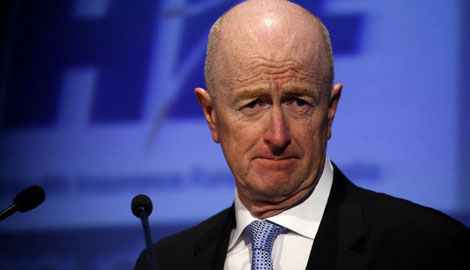Job cuts are coming, but let’s keep them in perspective

Job cuts are set to dominate the economic news again this year, so it’s going to be important to keep things in perspective.
 Oh, so you want a rate cut to go with those job cuts? Photo: Marie Nirme
Oh, so you want a rate cut to go with those job cuts? Photo: Marie Nirme
Official job figures out last week show the economy had 5500 fewer jobs last December than it did last November. As a result, the number of people looking for but unable to find work jumped by 16,600 to 656,400, and the jobless rate went from 5.3 per cent to 5.4 per cent.
Last year, total employment grew just 1 per cent, lagging behind population growth of 1.6 per cent. The economy needs to create about 13,000 extra jobs each month just to absorb population growth.
This is shaping up as a tough year for job seekers, with economists forecasting that the jobless rate will climb even higher – perhaps as high as 6 per cent.
Economists have been tipping a rise in the jobless rate for a while now, as the high Australian dollar puts pressure on big employers such as tourism, manufacturing and education services.
More surprising has been the relative health of the jobs market, with high profile job losses offset by less well-reported job gains in health, aged care and services.
Here are some statistics to keep in mind the next time you hear of large-scale job cuts.
Every month the economy creates and destroys tens of thousands of jobs. The figure the media focuses on – 5500 jobs lost – is the net figure, and this belies the real churn that goes on in the labour market.
Economist Bruce Chapman did a study two years ago which found that, on average, about 370,000 people who are jobless in one month are employed the following month. Conversely, about 370,000 people who are employed one month are jobless the next.
The jobless queue may grow, but it’s not the same 650,000 people in the queue every month.
And a Reserve Bank research paper released just before Christmas also suggests a remarkable degree of stability for many in the workforce.
It found 80 per cent of workers have been in their current job for more than a year. Fact is, most of us will end the year in the same job as we began it.
The Bureau of Statistics also keeps a record of the number of “job separations” each year. Turns out that of the 2.5 million separations a year, two-thirds, or 1.7 million, are voluntary. About half of these are people leaving for a better or more suitable job. The other half leave for life-cycle or personal reasons such as having a baby or retirement.
That leaves around 800,000 “involuntary separations” a year. Of these, 390,000 are retrenchments and 423,000 are temporary jobs.
The figures show the number of involuntary separations has been ticking up since 2010 as a result of huge structural changes. Economists expect this to continue this year.
Households’ lower appetite for debt is also hurting retail, banking and housing construction.
The good news is that the Reserve Bank is aware of this and has been slashing interest rates to support jobs and growth. It can cut again.
Source: Jessica Irvine is National Economics Editor.ThePunch.com.au
758 total views, 1 today






